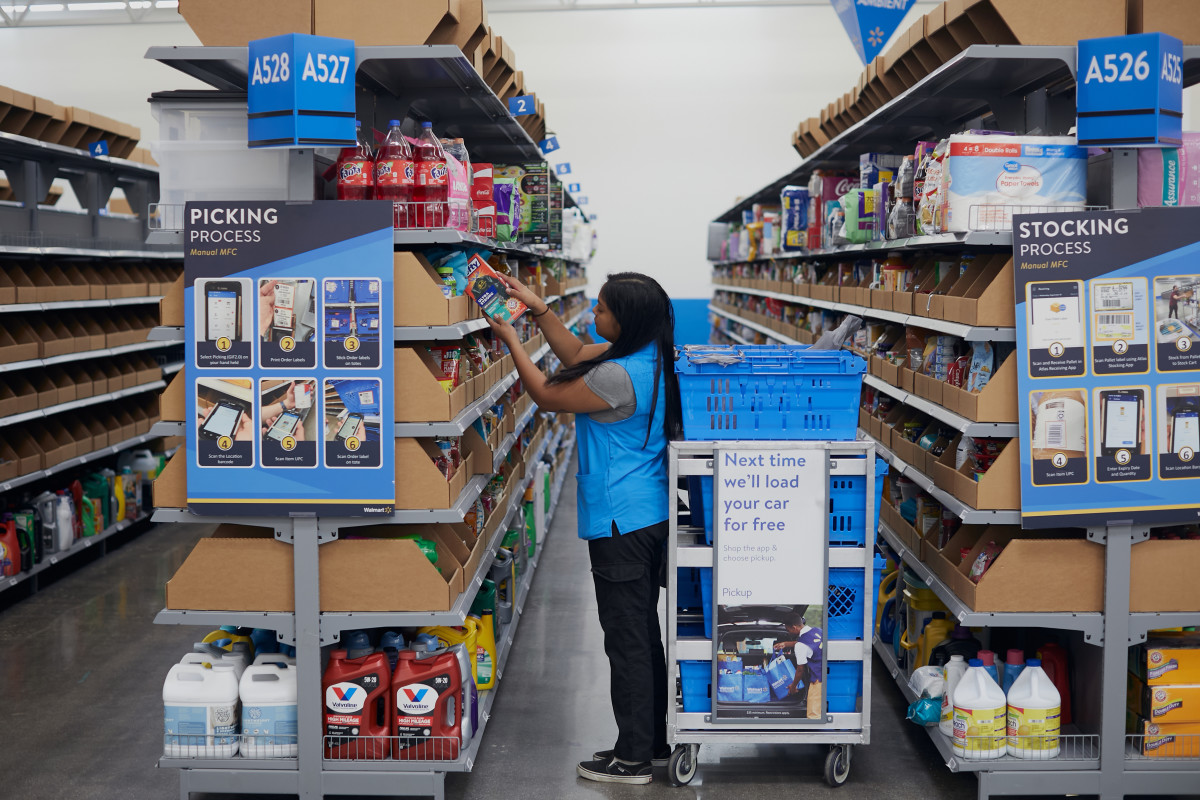
When you think of fast shipping and quick fulfillment times, the retailer that probably first comes to mind is Amazon (AMZN) .
The online juggernaut has invested billions of dollars into its shipping efforts; as of mid 2023 the retailer said it had delivered close to 2 billion packages to Prime members via same day or next day delivery. As of 2019, it was only fulfilling a quarter of that.
It's also invested about $8 billion into its Delivery Service Program, beefing up technology safety features, rates, programs as of 2024.
It's obvious that Amazon sees a huge opportunity to serve and delight customers via speedy and affordable shipping, and it's been spending money at a breakneck pace to outdo any peers who might attempt to compete for its prowess.
But Walmart (WMT) has been steadily growing its own shipping and logistical efforts. The growth of Walmart+, its paid version of a membership program which functions similarly to Amazon Prime, has put harsher demands on America's largest retail store to scale up its fulfillment processes and get packages to customers on a competitive rate with Amazon.
Walmart makes big delivery strides
Part of Walmart's big advantage when it comes to catching up to Amazon is its multitudinous footprint; the retail giant has at least one store location within 10 miles of 90% of the population. Cleverly, it's been using those stores as shipping centers to minimize delivery time if a store has certain goods in stock, rather than calling on a remote warehouse to do the fulfillment.
But those "last mile" delivery efforts can be expensive and complicated, since it relies on a smaller network of potential delivery drivers and searching across thousands of stores around the country rather than just a few massive warehouse hubs. But with increased demand for online orders, Walmart says it's making strides in reducing cost and has been able to disperse it across its volume of customers.
Walmart refers to this as the "densification of our network," and has highlighted it as a priority as it relates to last mile delivery for 2024.

"As we have more customers coming to us, using us through e-commerce channels, it enables us to spread that cost of delivery over multiple customers," CFO John Rainey explained to analysts on the Q4 earnings call in February.
And faster fulfillment at a higher volume is good for business. Rainey said Walmart is seeing the cost come down for customers by a noticeable margin compared to last year.
"As we increasingly use stores to fulfill e-commerce orders, we've lowered last-mile store-to-home delivery costs by about 20% in the last year, even as we've shortened delivery times to same-day from around 90% of stores," he explained.
Walmart saw a 17% increase in e-commerce sales in Q4, with growth spread across both its grocery segment (which it handily dominates) and its online business at large.
Also up 17% is Walmart's weekly active customers, which is how the company measures its participating and frequent buyers on the site. This has been fueled largely by its efficient fulfillment center model.
"And so, if you think about an item like our weekly active customers on e-commerce, that's up 17%, much more than our top line. So, customers are recognizing that they can come to Walmart for convenience just as much as they can on price, and that actually helps the profitability of this channel for us," Rainey said.
Related: Veteran fund manager picks favorite stocks for 2024







